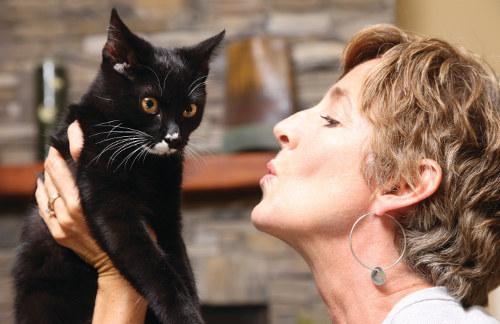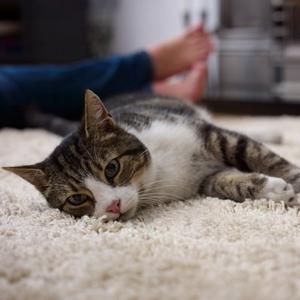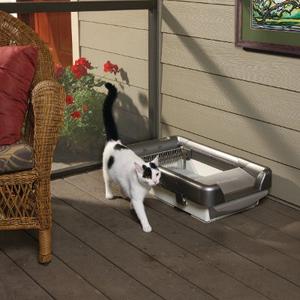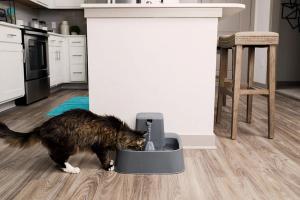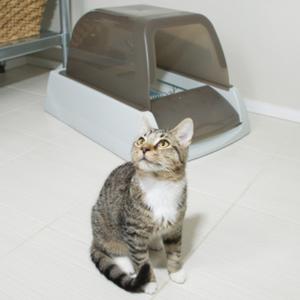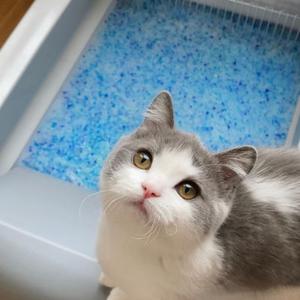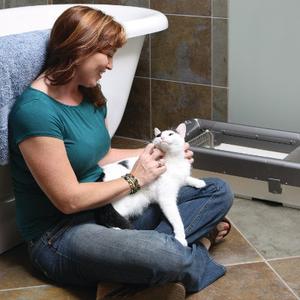by Dr. Arnold Plotnick MS, DVM, ACVIM, ABVP
What is spraying?
Spraying is the deposition of small amounts of urine on vertical surfaces. The spraying cat may be observed to back into the area, the tail may quiver, and with little or no crouching the urine is released. Although much less common, some cats will also mark their territory by leaving small amounts of urine or occasionally stool on horizontal (flat) surfaces.
Why do cats “mark” with urine?
Cats will mark their territory to signal ownership and to advertise sexual receptivity and availability. Marking locations where they live or frequent in many ways, cats will mark with scent glands on their feet (scratching), cheeks (bunting), face and tail as well as with urine.
Deposition of an odor communicates that the animal was in a location long after that animal has gone. Since marking is a method of defining territory, urine is often found in prominent locations, like at entry and exit points to the outdoors such as doors and windows. When outdoors cats may mark around the perimeter of their yard, as well as on prominent objects and locations in the yard where other cats have marked.
Cats will also mark their territory when they feel threatened or stressed. This can occur with a change in routine, living arrangements and other environmental and social changes. In these cases the marking pattern may be related to new objects brought into the household, or the possessions of family members, especially those with which there is a great source of conflict or insecurity.
Which cats are more likely to urine mark?
Both male and female cats can mark with urine; however urine marking is most common in non-neutered male cats. When an intact male sprays urine, it will have the characteristic “tom cat” odor that is strong and pungent. Neutering will change the odor, and may reduce the cat’s motivation for spraying, but approximately 10% of neutered males and 5% of spayed females will continue to spray. While cats in multiple pet households are often involved in spraying behaviors, cats that are housed singly may spray as well.
Instead of spraying, I am finding multiple locations of small amounts of urine. What does that mean?
Some cats will mark their territory with small amounts of urine (and on rare occasions, stool). These locations can be similar to those for spraying, but may occasionally be found on owner’s clothing or other favored possessions. However, small amounts of urine outside of the litter box are more commonly due to litter box avoidance which could have many causes including diseases of the lower urinary tract.
How do I treat a spraying or marking problem?
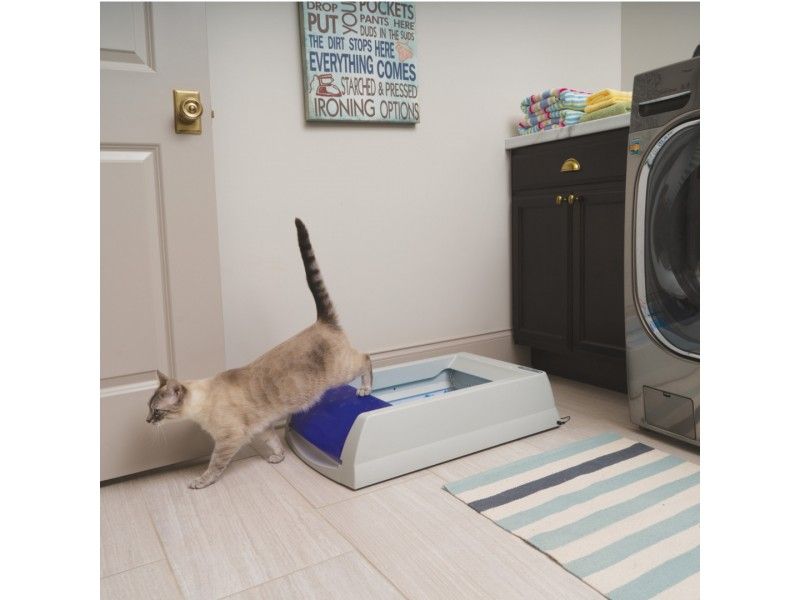 As with all behavior problems, history will help determine treatment options. The location of the urine marking, the frequency, duration and number of locations are important. The number of cats both inside and contacts outside of the home should be determined.
As with all behavior problems, history will help determine treatment options. The location of the urine marking, the frequency, duration and number of locations are important. The number of cats both inside and contacts outside of the home should be determined.
Changes in environment, social patterns of humans and animals, and additions (people, pets, furniture, renovations) to the home should also be examined. Treatment is aimed at decreasing the motivation for spraying. It has been shown that spraying may be reduced in some cases by reviewing and improving litter box hygiene.
Ideally the minimum number of litter boxes should equal the number of cats plus one, the litter should be cleaned daily and changed at least once a week, and proper odor neutralizing products should be used on any sprayed sites. In addition any factors that might be causing the cat to avoid the use of its litter should be considered.
If marking appears to be stimulated by cats outside of the home, then the best options are to find a way to deter the cats from coming onto the property or prevent the indoor cat from seeing, smelling or hearing these cats. If the problem is due to social interactions inside the home, it may be necessary to determine which cats do not get along. Keep these cats in separate parts of the home with their own litter and sleeping areas. Reintroduction of the cats may be possible when they are properly supervised.
Allowing the cats together for positive experiences such as feeding, treats and play sessions, helps them to get used to the presence of each other, at least on a limited basis. However, when numbers of cats in a home reach 7-10 cats you will often have spraying and marking.
I’ve cleaned up the spot but the cat keeps returning to spray. What else can be done to reduce the problem?
Since the purpose of spraying is to mark an area with urine odor, cleaning alone does little to reduce spraying. A commercial product containing synthetic facial pheromone (Feliway) has proven to be an effective way of reducing urine marking in some cats. When sprayed on areas where cats have sprayed urine or on those areas where it can be anticipated that the cat is likely to spray, it may decrease the likelihood of additional spraying in those areas. The scent of the pheromone may stimulate cheek gland marking (bunting), rather than urine spraying.
Are there any drugs that are available to treat this problem?
Over the years many pharmacological means have been tried to control spraying behaviors. The choices have focused on the theory that one of the underlying causes for spraying and marking behaviors is anxiety. For that reason, anti-anxiety drugs have been tried with varying degrees of success. None of these are presently approved for use in cats. Dosing, cost, and the potential for side effects will all need to be considered in selecting the most appropriate drug for your cat.
Buspirone and Diazepam have both been shown to be effective in curtailing spraying behavior, however, a substantial number of cats will resume spraying if the drug is discontinued, necessitating long-term administration. Diazepam may have some undesirable side-effects, such as sedation and increased appetite. Recently, fluoxetine (Prozac) and clomiprimine (Clomicalm) have been shown to be very effective in controlling spraying behavior, and cats are much less likely to resume spraying behavior when the drugs are discontinued, compared to other behavior-modifying medications.
About Dr. Plotnick
Dr. Arnold Plotnick is a board-certified veterinary internist and feline specialist. He is the owner of Manhattan Cat Specialists, a full-service veterinary facility located in New York City. Dr. Plotnick is also the medical editor of Catnip magazine and is a medical advice columnist on CatChannel.com. He authors his own blog "Cat Man Do". You can follow him on Facebook and Twitter.

